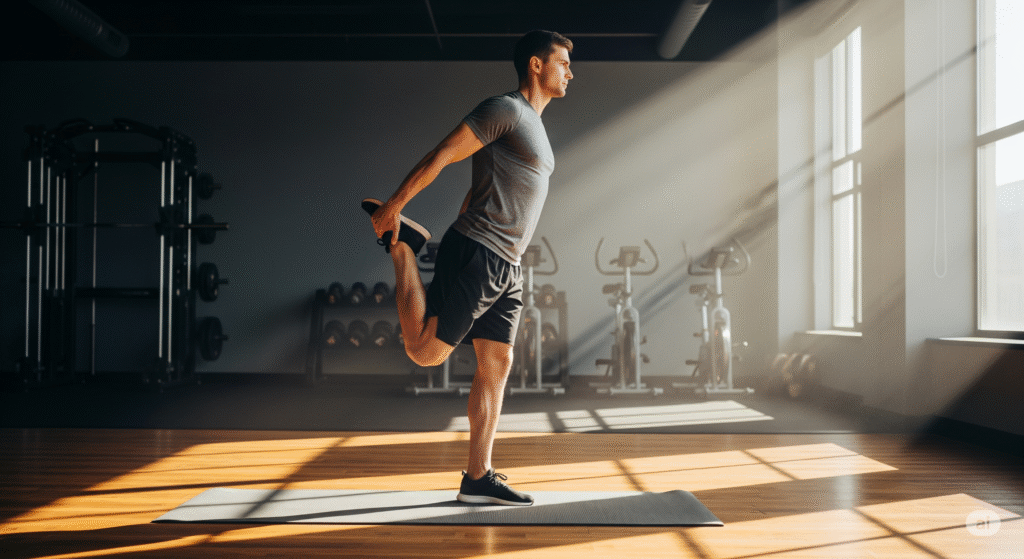Strength Training for Beginners: Build Muscle, Burn Fat, and Get Strong in 2025
If you’re looking to get leaner, stronger, and healthier, strength training should be part of your routine.
You don’t need to be a bodybuilder. You don’t even need a gym.
Whether you’re trying to tone up, lose weight, boost energy, or improve your health, strength training offers life-changing benefits for every body and every age.
In this beginner-friendly guide, we’ll cover:
- What strength training is
- Why it’s important
- How to get started
- Simple beginner exercises
- FAQs and trusted resources
💪 What Is Strength Training?
Strength training (also called resistance training) is any exercise where your muscles work against a force. That force could be:

- Dumbbells or kettlebells
- Resistance bands
- Your own bodyweight
- Machines or weighted cables
The goal? To build strength, increase muscle mass, and improve endurance.
Why Strength Training Is Important
Strength training isn’t just for athletes or fitness influencers. It’s one of the most effective ways to:
- Burn fat while preserving lean muscle
- Boost metabolism (even while resting!)
- Improve bone density and joint health
- Enhance posture, balance, and coordination
- Reduce the risk of injury and chronic disease
- Boost confidence and mental health
According to the CDC, adults should do strength training at least 2 days a week.
🏁 How to Start Strength Training (Beginner-Friendly)
Step 1: Choose Your Equipment
Start with what you have:
- Bodyweight (great for absolute beginners)
- Dumbbells (ideal for home or gym use)
- Resistance bands (portable and joint-friendly)
- Machines (for added support in gyms)
Step 2: Learn Basic Movement Patterns
There are 5 essential movements that form the base of most strength programs:
| Movement | Example Exercise | Muscles Worked |
|---|---|---|
| Push | Push-ups, chest press | Chest, shoulders, triceps |
| Pull | Rows, pull-downs | Back, biceps |
| Squat | Bodyweight squat | Quads, glutes |
| Hinge | Deadlift, glute bridge | Hamstrings, glutes, back |
| Core | Planks, bird-dogs | Abs, lower back |
Step 3: Use Proper Form Over Heavy Weights
Always focus on form first. Good technique prevents injury and builds strength faster. Start light. Once you’re confident in your form, gradually increase resistance.
Step 4: Follow a Simple Weekly Plan
Here’s a sample beginner strength plan:

| Day | Workout Focus |
|---|---|
| Monday | Upper Body (Push + Pull) |
| Tuesday | Rest or Light Cardio |
| Wednesday | Lower Body + Core |
| Thursday | Rest |
| Friday | Full Body Strength |
| Saturday | Walk or Yoga |
| Sunday | Rest |
10 Beginner Strength Training Exercises
Try doing 2–3 sets of 8–12 reps per exercise. Rest 30–60 seconds between sets.
✅ 1. Bodyweight Squat
- Stand with feet shoulder-width apart
- Lower down like sitting into a chair
- Keep heels flat, chest up
- Stand back up by pressing through your heels
✅ 2. Wall Push-Up (or Regular Push-Up)
- Stand facing a wall, hands at shoulder height
- Bend elbows to bring chest to the wall
- Push back to start
Progress to knee or full push-ups as you gain strength.
✅ 3. Dumbbell Shoulder Press
- Hold weights at shoulder height
- Press straight up, then lower slowly
- Keep core tight to avoid arching your back
✅ 4. Bent-Over Dumbbell Row
- Hinge forward at the hips
- Pull weights toward your waist
- Squeeze shoulder blades, then lower
✅ 5. Glute Bridge
- Lie on your back, knees bent
- Press hips up by squeezing your glutes
- Hold, then lower with control
✅ 6. Bird-Dog (Core Stability)
- On all fours, extend opposite arm and leg
- Keep your back flat and abs tight
- Return and repeat on other side
✅ 7. Step-Up (Use a Low Bench or Sturdy Step)
- Step one foot up
- Press through heel to lift your body
- Step down and repeat on the other leg
✅ 8. Dumbbell Bicep Curl
- Hold weights with palms facing up
- Curl to shoulders, keeping elbows in
- Lower slowly
✅ 9. Overhead Tricep Extension
- Hold one dumbbell overhead
- Bend elbows to lower the weight behind your head
- Extend arms to lift back up
✅ 10. Plank (Knees or Toes)
- Support yourself on elbows and knees or toes
- Keep spine neutral and abs tight
- Hold 20–30 seconds to start
⚖️ Progressing Over Time
Once your body adjusts, here’s how to increase the challenge:
- Add more reps or sets
- Increase weight/resistance
- Reduce rest time between sets
- Switch to more advanced variations
Progress slowly and safely. Strength is built over time—not overnight.
Cool Down After Every Workout

Spend 5 minutes stretching muscles you worked:
- Chest and shoulder stretches
- Standing hamstring stretch
- Quad stretch
- Child’s pose
- Neck and back rolls
Don’t skip the cool-down—it reduces soreness and helps with recovery.
Walking Pad for Weight Loss: How to Burn Fat Easily While You Work or Relax
Tips for Staying Consistent
- Schedule workouts like appointments
- Track progress in a notebook or app
- Focus on how you feel, not just looks
- Don’t compare your progress to others
- Celebrate small wins (e.g., lifting heavier, doing more reps)
🌐 Trusted Resources
- Mayo Clinic: Strength Training 101
- American College of Sports Medicine (ACSM): Fitness Basics
- VeryWell Fit: Strength Training for Beginners
❓Frequently Asked Questions (FAQs)
✅ Do I need a gym membership?
Not at all! Many strength exercises can be done at home with bodyweight, dumbbells, or resistance bands.
✅ How many days a week should I strength train?
2–3 non-consecutive days is ideal for beginners. This allows recovery while building consistency.
✅ Will strength training make me bulky?
No. Gaining large muscle mass requires very specific training and diet. Most people build lean, toned muscle, not bulk.
✅ Can I lose weight with strength training?
Yes! It boosts metabolism, burns calories, and preserves lean muscle—which is key for sustainable fat loss.
✅ Is it safe for older adults?
Absolutely. In fact, strength training helps prevent bone loss, improves balance, and maintains independence with age.
🏁 Final Thoughts: Strength Is for Everyone
Strength training isn’t just about lifting weights—it’s about lifting yourself into better health, confidence, and longevity.
Start where you are. Use what you have. And remember, strength is built one rep at a time.
You’ve got this.
